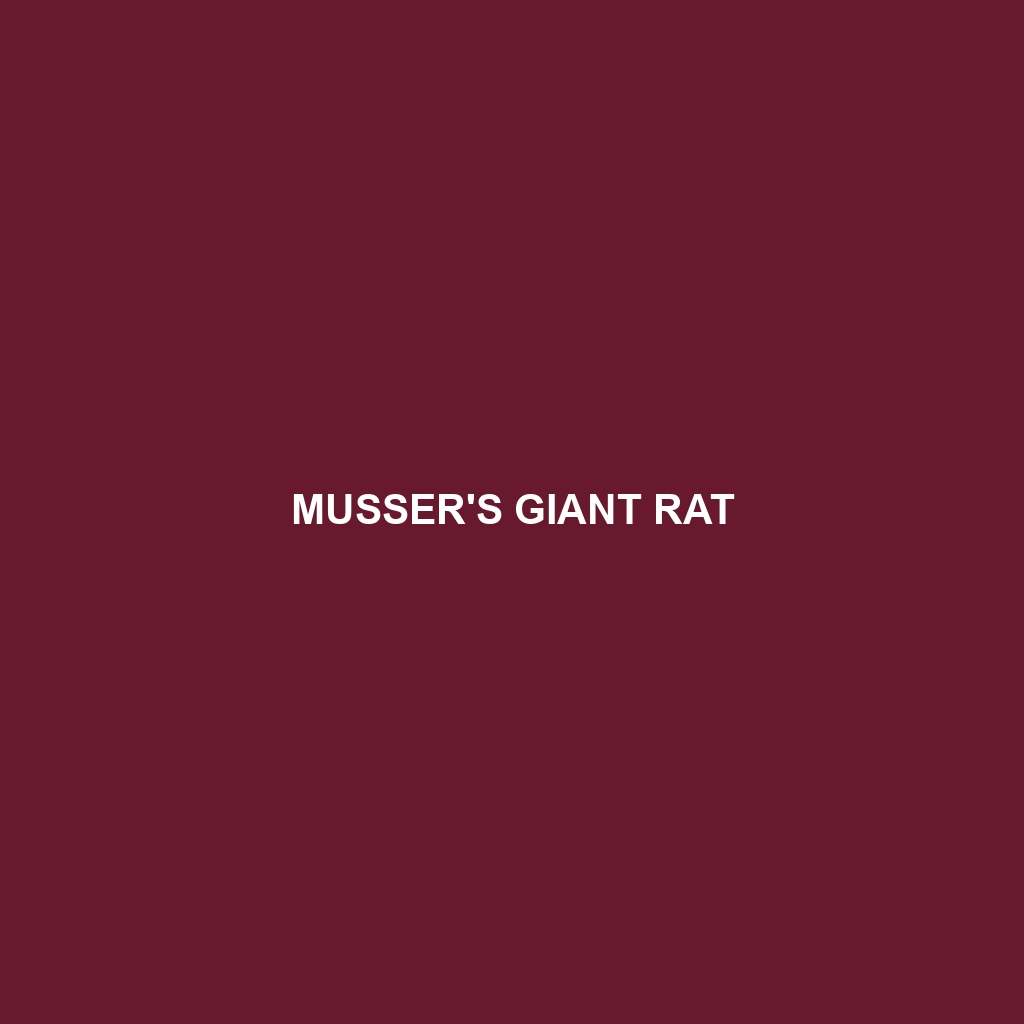Andaman Archipelago Rat
Common Name: Andaman Archipelago Rat
Scientific Name: Rattus andamanensis
Habitat
The Andaman Archipelago Rat is primarily found in the lush tropical forests of the Andaman and Nicobar Islands in India. This species thrives in dense vegetation, where it creates burrows in leaf litter and soil. The humid and warm climate of these islands provides an ideal environment for the rat, which is often spotted near coastal areas and among undergrowth in shaded forests.
Physical Characteristics
This medium-sized rodent typically measures approximately 25-30 cm in length—excluding the tail, which can be longer than its body. The Andaman Archipelago Rat has a robust body covered in coarse, dark brown fur with lighter underparts. It features a pointed snout and large ears that aid in its acute sense of hearing. Its long, slender tail is sparsely furred, which helps it maintain balance while navigating through its arboreal habitat.
Behavior
The Andaman Archipelago Rat is predominantly nocturnal, becoming active at night to forage for food. These rats are social creatures and often live in small colonies, displaying complex social behaviors. They are known for their strong territorial instincts, marking their presence through scent markings. Additionally, they exhibit agile climbing skills, often ascending trees to escape predators or to find food.
Diet
This species primarily feeds on a varied diet of fruits, seeds, and nuts, with a particular preference for the fruits of local shrubs and trees. The Andaman Archipelago Rat also scavenges for insects and small invertebrates, adapting its feeding habits based on seasonal food availability. Their foraging behavior plays a critical role in seed dispersal, contributing to the regeneration of their forest habitat.
Reproduction
The breeding season for the Andaman Archipelago Rat typically occurs twice a year, with peak periods coinciding with the rainy season when food sources are abundant. After a gestation period of approximately 3 weeks, females give birth to litters ranging from 4 to 10 pups. The young are altricial, developing rapidly and becoming independent within a few weeks, often remaining close to their mother’s burrow for safety during their early days.
Conservation Status
The Andaman Archipelago Rat is currently classified as vulnerable due to habitat loss from deforestation, land development, and invasive species. Conservation efforts are critical for maintaining the ecological balance of the Andaman Islands and ensuring the survival of this unique species.
Interesting Facts
One fascinating fact about the Andaman Archipelago Rat is its unique adaptation to both terrestrial and arboreal environments, showcasing its versatility. Additionally, it is one of the few rat species known to have a strong affinity for marine environments, often foraging along the shorelines of its habitat.
Role in Ecosystem
The Andaman Archipelago Rat plays a vital role in its ecosystem as a seed disperser and prey for various terrestrial and aerial predators. By feeding on fruits and seeds, it aids in the growth of vegetation, helping to maintain the biodiversity of the Andaman and Nicobar Islands. Its interactions with other species contribute to the overall health and balance of its forest ecosystem.
